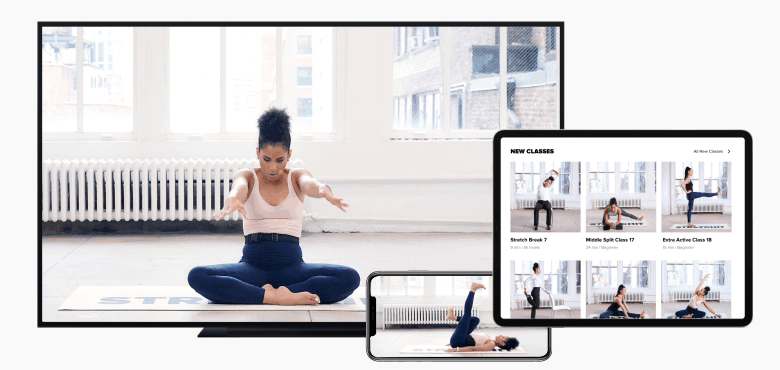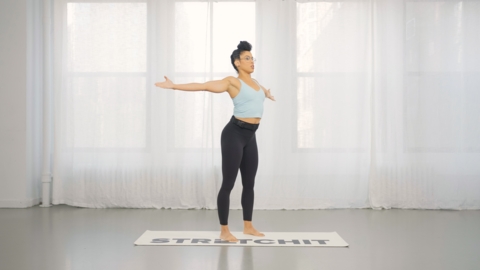A Beginner’s Guide to Front Splits

Front splits are among the most iconic stretches - and a goal many of us hope to achieve.
But let’s be honest, getting there can feel like you’re trying to convince your body to bend in ways it’s not totally on board with. It's a journey full of tight hamstrings, stiff hips, and plenty of "I’ll get it next time" moments.
In a front split, you’re extending one leg forward, and the other backwards, ensuring your hips stay squared to the ground.
While it may seem simple in theory, achieving the splits requires a high degree of flexibility in your hamstrings, quads, and hip flexors (and they’re not always as enthusiastic as you are when it comes to getting in position).
But don’t worry, with the right approach and consistent effort, even the tightest muscles will eventually loosen up.
What’s Needed to Master the Front Splits?
Mastering the front splits requires a combination of flexibility in specific muscles and mobility in your hips. Here’s what you’ll need to focus on:
Quads - The quadriceps of the back leg must be lengthened and flexible to extend fully behind you. Tight quads will restrict how far back your leg can reach.
Hamstrings - The hamstrings of your front leg must be flexible enough to straighten completely without causing too much discomfort. This is one of the biggest roadblocks for many people.
Hip Mobility - Hips are often overlooked when it comes to splits, but they play an important role. Tight hip flexors or lack of mobility in the hips can make it difficult to keep them square, which is essential for proper form in a front split.
Improving these three areas will take you closer to your front split goal.
How to Do the Front Splits
Mastering the front split takes time and patience, but here’s how you do it once you’ve put in the work.
- Start in a kneeling lunge position. Place your front foot forward with your knee bent and your back knee resting on the ground.
- Begin extending your front leg. Straighten it out while gradually sliding your back knee further behind you.
- Keep your hips square. One of the biggest challenges is not letting your hips rotate. Try to keep them facing forward, aligned with your front leg.
- Lower your torso as you continue to slide into the split. You can place your hands on the ground or on yoga blocks for support.
- Breathe and hold. Even if you can’t fully extend into the splits right away, get comfortable in the position you can reach and breathe deeply.
The key to this movement is control - don’t force it. With consistency, you’ll feel yourself inching closer to full splits over time.
Front Split Stretch Routine
If getting into a front split still seems like a stretch (pun intended), don’t worry.
You can work your way there with targeted stretches that improve flexibility where you need it most.
Try incorporating the following four exercises into your routine to build the foundation for a full front split.
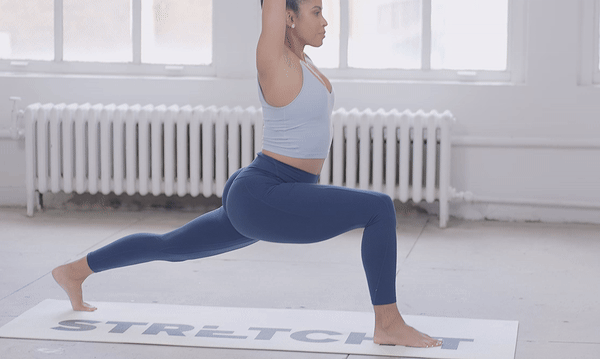
Forward Lunge
The forward lunge is excellent for opening up your hip flexors and lengthening your quads, both of which are essential for a front split.
By driving your glutes forward and placing the front foot further away, you gently progress and increase the range of motion necessary to reach the full split position.
This is particularly useful for those struggling with quad flexibility in their back leg.
- Start in a basic lunge position, with your front foot planted firmly on the ground.
- Drive your glutes forward while keeping your back leg straight behind you.
- Gradually place your front foot farther away to deepen the stretch.
- Lower your hips as much as possible, feeling the stretch in your quads and hip flexors.
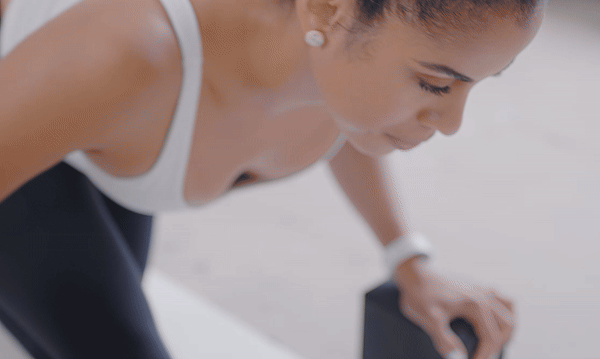
Half (Kneeling) Front Split
This stretch isolates the hamstrings on your front leg while gently opening the hips, making it one of the most direct pathways to a front split.
By keeping your back knee on the ground and straightening the front leg, you're slowly conditioning your body to the split position without putting too much strain on your muscles early on.
- Begin kneeling with one foot forward, much like a lunge.
- Straighten your front leg and flex your foot back toward you.
- Keep your hands on either side of your leg for balance.
- Try to fold forward over your front leg, reaching for your toes while keeping the back leg stationary.
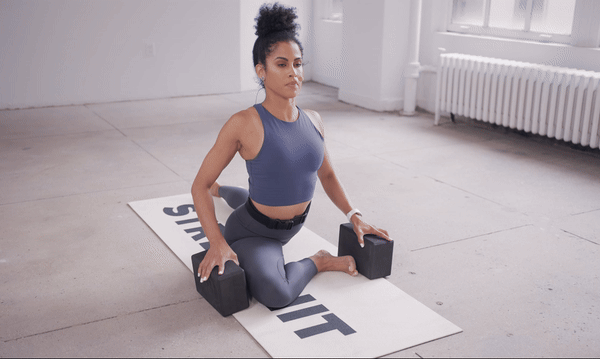
Pigeon Pose
Pigeon pose is a hip-opener that also stretches the glutes, piriformis, and deep hip muscles.
Tight hips can be a significant roadblock to achieving front splits, so by using this pose to release tension in your hips, you’ll allow for greater freedom of movement when trying to deepen your front split.
- Start in a plank position, then bring one knee forward and place it behind your wrist while extending the other leg straight behind you.
- Keep your hips square as you lower down into the stretch.
Hold for several breaths, then switch sides.
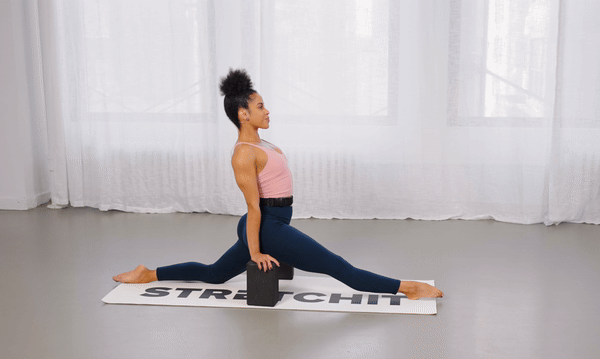
Elevated Front Splits (Using a Yoga Block)
Using a yoga block to elevate the hips allows for a gradual descent into the front split while keeping your alignment in check.
As you reduce this elevation over time, you gain better awareness of which muscles (hamstrings, quads, or hip flexors) are tight and need more work. This controlled progression makes the stretch both effective and safe.
- Start in a front split with a yoga block placed under the front hamstring, close to your hips, for support.
- Slowly lower the block over time as you increase flexibility.
Get Started with STRETCHIT
If you’re serious about mastering the front splits, consistency is key. With the right stretches, patience, and guidance, you’ll see progress.
And if you’re looking for expert-led programs to help you on your journey, STRETCHIT is your go-to.
STRETCHIT’s comprehensive range of programs, including those focused on splits, will help you safely build flexibility while tracking your progress.

